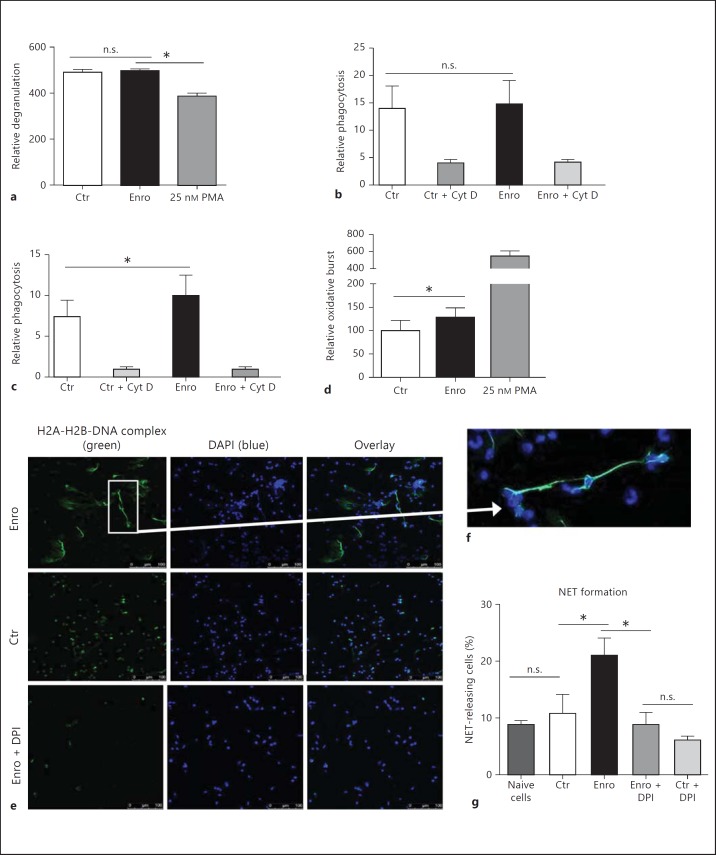Fig. 1.
Effect of enrofloxacin (Enro) on the antimicrobial defense strategies of bovine granulocytes. Granulocytes were isolated via density gradient centrifugation and treated with 10 µg/ml enrofloxacin for 2 h. a Relative degranulation measured by flow cytometry. Neutrophil phagocytosis of FITC-labeled bacteria: E. coli (b) and S. aureus (c). PMA (25 nM) was used as a positive control, and the phagocytosis-blocking agent cytochalasin D (Cyt D) was used as a negative control. d Relative oxidative burst measured by flow cytometry using DCF as a fluorescent probe. The results of a minimum of 3 independent experiments were analyzed using a paired, one-tailed t test. * p < 0.05. e-g Formation of NETs after treatment of granulocytes with enrofloxacin or the vehicle control NaOH (Ctr) in the presence or absence of DPI to block the NADPH-oxidase-dependent formation of ROS. NETs were visualized by immunofluorescence microscopy using an antibody against histone-DNA complexes (green) and DAPI to stain DNA (blue) (colors refer to the online version only). e, f Representative images of the quantification depicted in g. The results of 3 independent experiments with 5 images each were analyzed using a paired, one-tailed t test (* p < 0.05). n.s. = Not significant.

